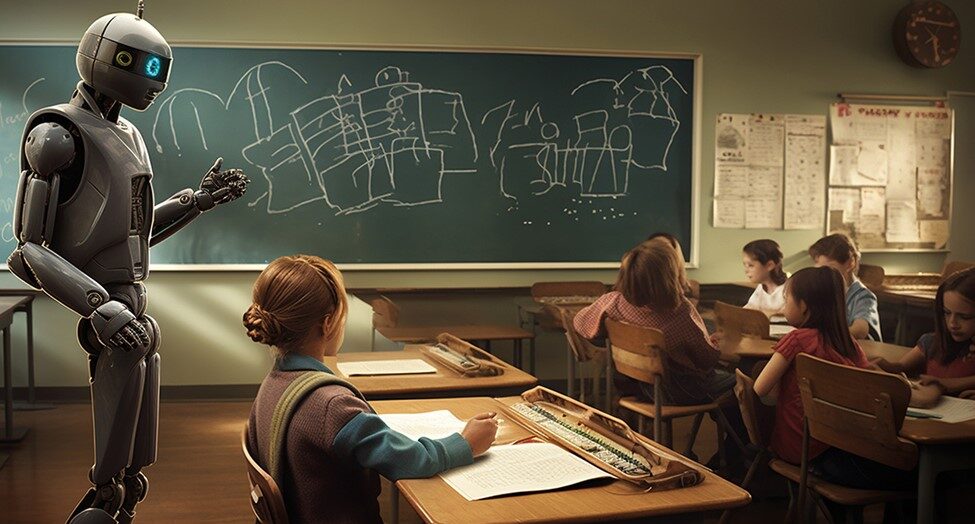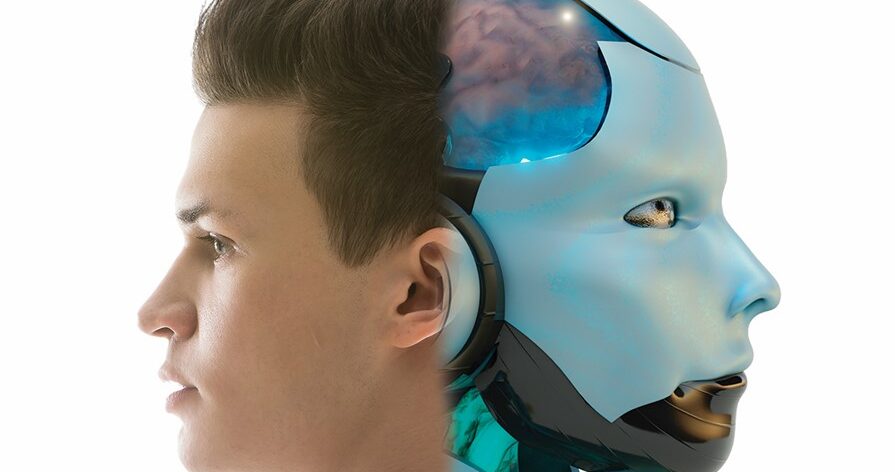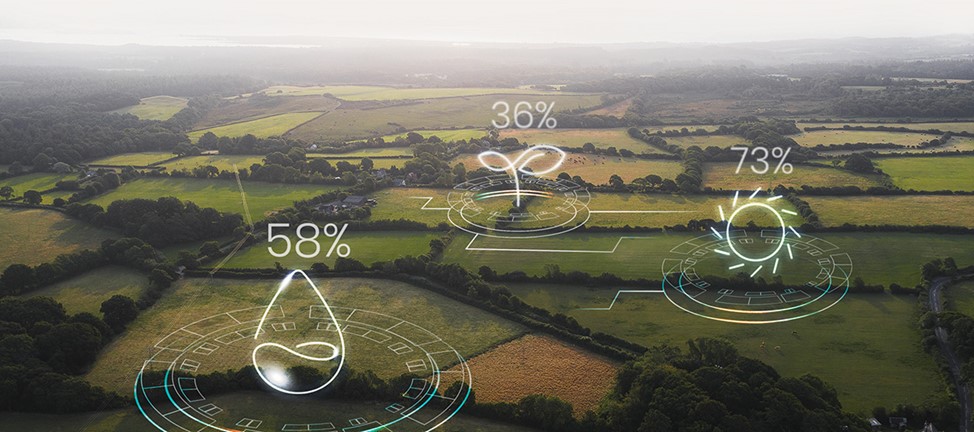This article first appeared in May’s issue of Business Monthly.
Despite the advent of computers and the internet in classrooms, most see that current education systems are lagging, especially in emerging markets. “It is striking to reflect on how little education has changed in recent decades,” The Economist said in January. “Laptops and interactive whiteboards hardly constitute disruption.”
That stands in stark contrast to how much younger generations embrace technology. “Many parents bewildered by how their children shop or socialize would be unruffled by how they are taught,” the Economist said. “The sector remains a digital laggard.”
Accordingly, it is unclear how much AI will change education systems. “We’re still learning how AI … will integrate into education sectors as they develop,” Ilana Hamilton, a writer and update editor for education at Forbes Advisor, Forbes’ research arm, wrote in December. “We don’t yet have a full picture of how AI will affect critical issues of ethics, equity and data safety.”
AI benefits
AI technologies in educational games, for example, already are changing some aspects of schooling. “Teachers have long recognized the value of play-based learning,” Hamilton said. Some games, such as the Oregon Trail, date back to 1974. “Today, AI-powered games can deliver targeted learning thanks to user-responsive programming,” noted Hamiton.
Existing educational AI systems, such as those offered by Carnegie Learning and Knewton, also allow “adaptive learning platforms … that customize learning activities and content in real-time,” she said. This allows for “immediate feedback and helps the system adjust its approach.”
Such platforms help teachers meet students’ needs based on individual needs, strengths and weaknesses, learning styles, and preexisting knowledge. “That means delivering customized support and instruction,” Matthew Lynch, the author of “My Vision of Artificial Intelligence in Education,” told The Edvocate, a specialized platform.
Hamilton also noted that AI can “automate grading and feedback systems.” Lynch said such systems “can zero in on the specific information or concepts students are missing, so educators can deliver targeted improvements in materials and methods.”
Meanwhile, AI-powered chatbots can make students “feel more comfortable making the mistakes necessary for learning and receiving the feedback they need for improvement,” Lynch said. Hamilton explained those chatbots “stimulate the one-on-one experience of working with a human tutor [for] a single subject.”
Lynch’s book, “26 Ways that Artificial Intelligence Is Transforming Education for the Better,” highlighted other benefits, ranging from “classroom [and] behavior management” to “parent-teacher communication, staff scheduling, finance, transport, plagiarism detection and analyzing student success metrics.”
Challenges to implementation
Decision-makers in schools who want to implement AI face multiple challenges, most relate to funding or raising awareness of the technology’s benefits.
A 2021 International Finance Corp. (IFC) paper noted the “lack of digital literacy [among] teachers and students … in some emerging markets, especially low-income countries.” Even digitally savvy teachers and students “lack expertise, [as] AI is in its infancy in the educational sector in emerging economies.” The result is a “lack of formal data management strategy” to support AI implementation.
Accordingly, investing heavily in school and national digital infrastructures is essential. “In developed countries, issues like smartphones, other … gadgets and internet connections that help aid [AI] activities … are easily accessible,” Mercy Awofiranye, a reporter for the specialized portal After School Africa, said in a February article. “For students from developing countries …. this is certainly not the case,” as such devices “can be very expensive.”
The IFC paper also noted the importance of deploying ultra-high-speed reliable internet networks. “Smart classrooms using 5G and AI will be able to deliver rich content that encourages users on a multitude of devices to interact and engage at the same time, with no drops in connectivity.”
Risks and policies
Educators will face serious risks when implementing AI without policy updates. It starts with “the issue [of] ethics and transparency in data collection and use … as AI relies on data to function effectively,” said Awofiranye. “Issues like personal data concentration, data privacy and ownership, confidentiality, transparency and ethics [need] a lot of work.”
If students are “overly dependent on AI, it would limit their critical thinking skills and cognitive abilities,” said Awofiranye. This will hinder them from learning what it means to multitask or push themselves to be creative, as their assignments will now be made easier through the use of AI.”
AI’s proliferation in schools could also lead to “technology addiction among students and even teachers, [as they] now have to use smartphones, iPads or laptops for educational activities.”
A “special report” published in February on EducationWeek, a specialized publication, noted that to overcome such risks, “each district will have to think about its unique context when determining how to implement AI. [However,] there are some common strategies.”
The first strategy is to “align AI use with the district’s mission, vision and goals.” That alignment requires provisions to prevent “plagiarism, misinformation, bullying, unequal access, diminished teacher and student agency, and compromised data privacy.”
The second set of policies should focus on developing AI literacy among students, teachers and staff. That should include “a solid understanding of [the technology’s] limitations and the ethical considerations when using it,” the special report said.
Having a written AI policy is essential. “It should be clear to educators and students how and when they can use AI in their work, as well as the consequences for not using the tools responsibly,” the special report said.
Schools and ministries of education also need to “protect students’ and educators’ data privacy.” For students, “districts should think about obtaining parental consent for students to use AI tools in school.”
Schools also should “catalog the AI tools they use, their purposes and the information they require; craft policies that are clear about who can use AI tools and for what purposes, [while keeping] technical details and security implications of the tools in use.”
Schools and education districts need to “vet …and assess the impact of …AI tools,” similar to what happens with new books or new equipment students use. “Districts should also find out how AI tools are created and what data sources were used to train the models.” the report said.
New vision
A paper by the Global Council for the Promotion of International Trade (GCPIT) published in March stressed, “The future of education with AI is most effective when it fosters a collaborative environment.”
That includes “human-AI collaboration,” where “teachers leverage AI tools for personal learning, while AI tutors can offer targeted support [to] create a more effective learning environment.”
Meanwhile, teachers and students would “focus on critical thinking and creativity,” the GCPIT report said. “AI excels at tasks like automation and data analysis, [but] it’s ill-equipped for critical thinking and fostering creativity. Education will need to emphasize these vital human skills alongside the technical skills AI can help develop.”
Accordingly, “teachers will need training to effectively utilize AI tools and integrate them seamlessly into their teaching practices,” GCPIT said. Governments also need to develop “a global learning community [where] AI can transform education from a one-size-fits-all model to a personalized and engaging experience for every student.”







